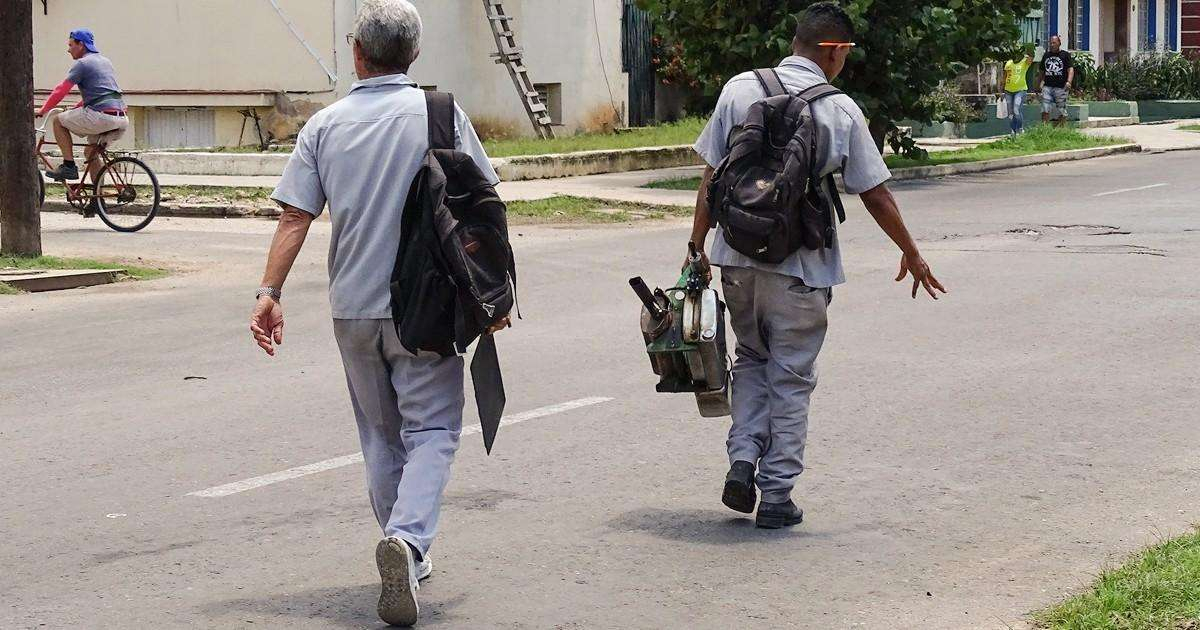
The transmission ofdengue It remains in all the provinces of Cuba, according to the country's health authorities.
At the end of week 40, 15 provinces, 44 municipalities, and 62 health areas have reported transmission of the disease, the Minister of Public Health reported this Tuesday.José Ángel Portal Miranda, in the usual meeting of experts and scientists on health issues with the rulerMiguel Diaz-Canel, that reviews the official platformCubadebate.
According to Minister Portal Miranda, the incidence rate of suspected dengue cases also increased slightly in relation to the previous week; and the provinces with rates higher than the national rate are, in descending order, Guantánamo, Santiago de Cuba, Sancti Spíritus, Camagüey, Havana, and Las Tunas.
Since week 37,The incidence rate of suspected dengue cases has not stopped growing on the island, according to information from the head of Health on the island.
Furthermore, in less than two months this virus has caused more than a dozen deaths, most of them minors.. There are also several health professionals on the list.
Among the most recent deaths is that of the 18-year-old girl Rosmeri Soria Silva, resident in Mayarí, Holguín, who died from complications derived from dengue, as confirmed toCyberCuba several sources. Soria was a neighbor of the El Cocal neighborhood and was in her third year of her bachelor’s degree in Primary Teachers at the 7 de Diciembre Pedagogical School in the municipality.
The death of the 10-year-old girl was also in the news.Melani Leyva Rodríguez, a resident of Granma, who, as confirmed to CiberCuba by a relative of the little girl, suddenly became unemployed and became unemployed shortly after her emergency transfer to the Bayamo Children's Hospital.
In mid-September the Cuban government confirmed thetransmission of the dengue virus in all Cuban provinces, of which Santiago de Cuba, Havana, Guantánamo, Las Tunas, Matanzas and Mayabeque and the special municipality of Isla de la Juventud, had at that time the highest incidence rate of suspected cases.
On that date, the health authorities also warned thatAn increase in the wave of dengue was expected in October and November on the island, taking into account the data on the behavior of the disease and the lack of an effective response to the epidemiological situation.
At the beginning of this month it was learned thatGuantánamo was the province with the highest number of reactive cases of dengue.
There the highest number of patients was reported in the municipalities of Baracoa and El Salvador.
According to Leonel Heredia, deputy director of the Provincial Center for Hygiene, Epidemiology and Microbiology, after those two municipalities, the provincial capital and Caimanera presented the highest risks of infestation and cases of dengue.
At the end of September, around 1,600 deposits with larvae of the Aedes Aegypti mosquito, which transmits the disease, were registered in that eastern province in 1,301 homes in nine municipalities, a situation that is explained by the population's need forstockpile water due to the inefficient supply of the resource.
At the end of July, the Cuban Ministry of Health warned that the mosquito was gaining ground and “serotypes 1, 2 and 3 of the virus” were circulating in the country, which can cause severe dengue.
Madelaine Rivera, National Director of Surveillance and Vector Control, then referred to the entomological risk presented in the current calendar as the one that has contributed the most in the last 15 years.
What do you think?
COMMENTFiled in: